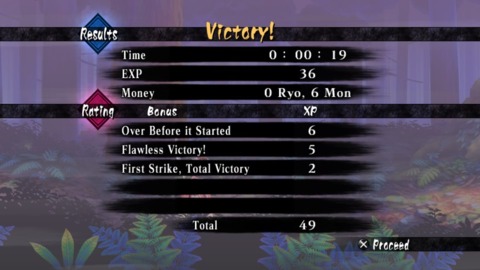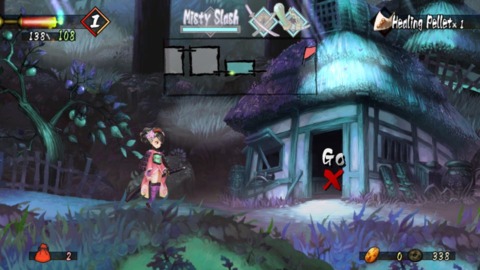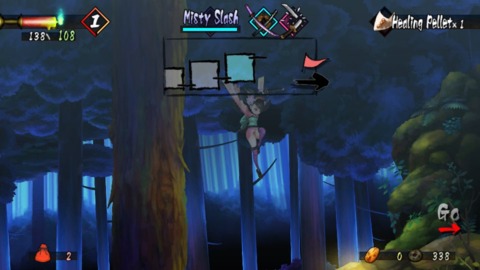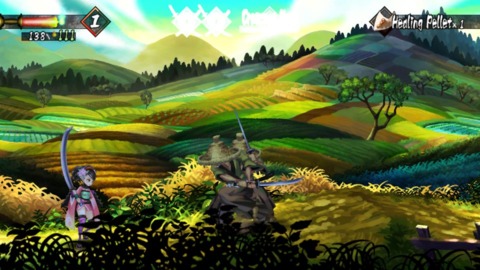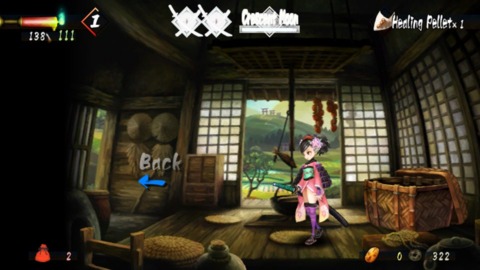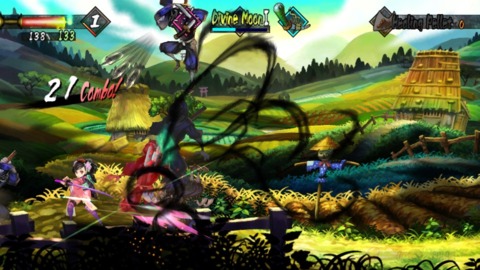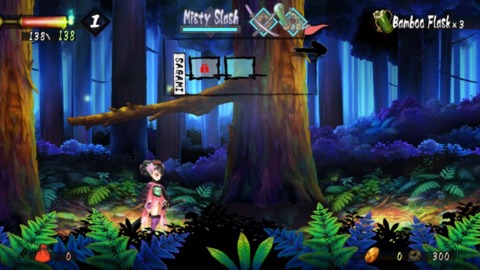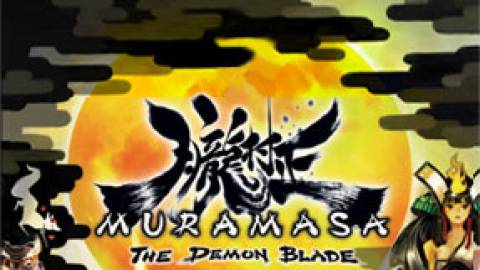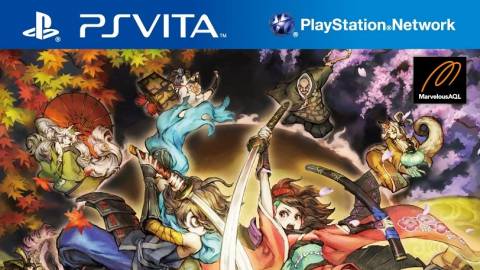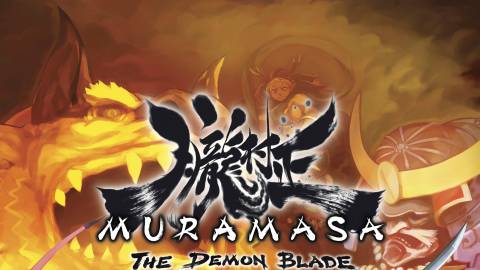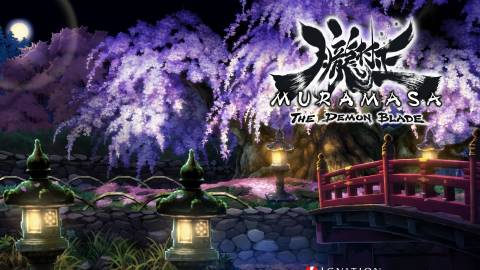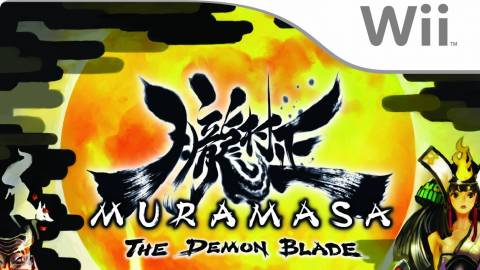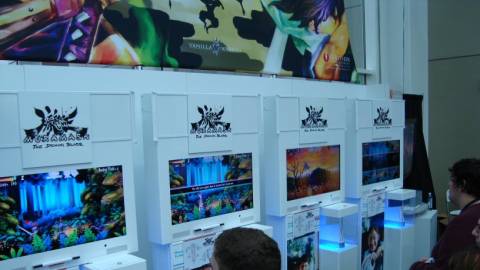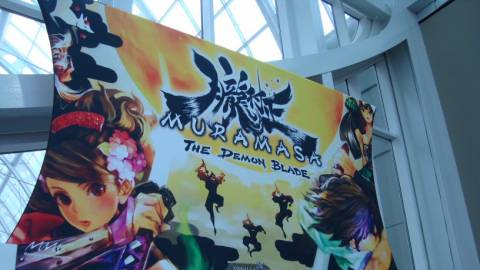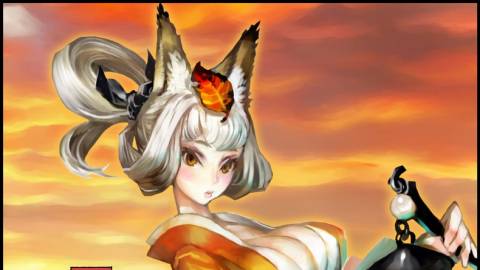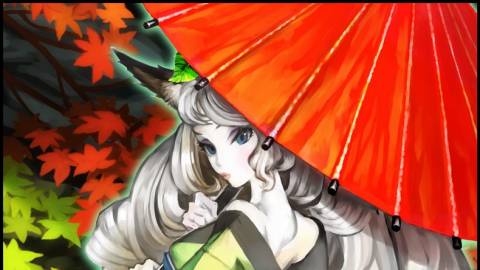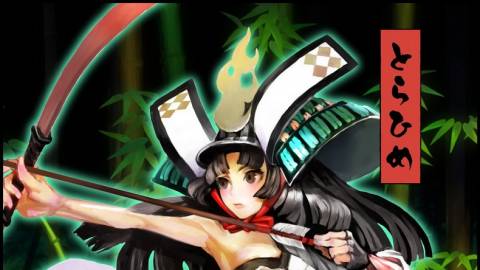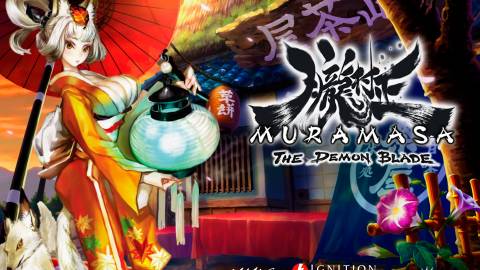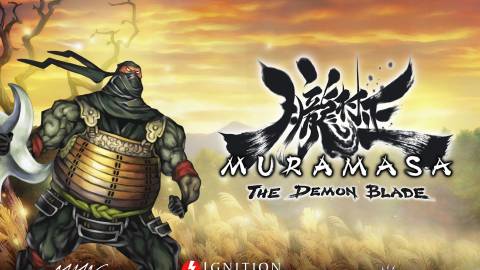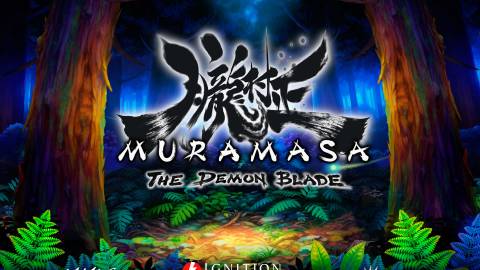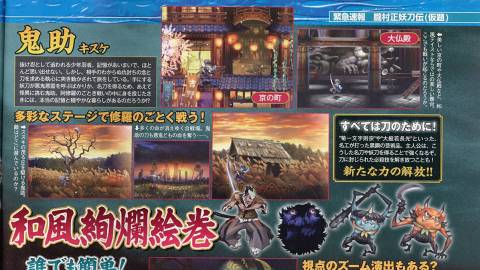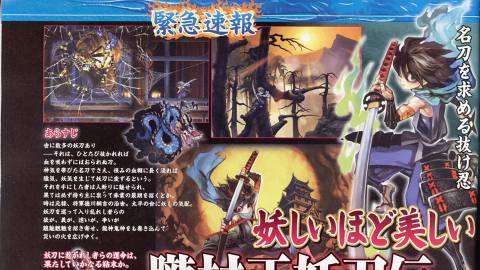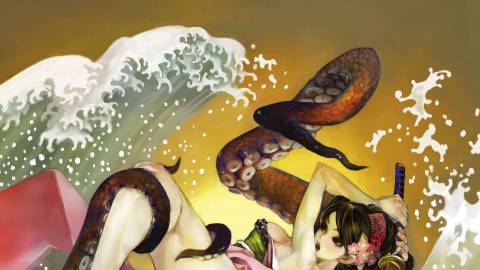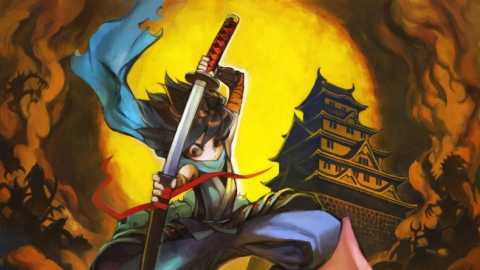Overview
Muramasa: The Demon Blade takes place in a mystical interpretation of feudal Japan. Demons, monsters, and magic are everywhere, and players will blast through them using a variety of weapons, items and magical attacks. You can switch between weapons on the fly and the special moves that you can execute depend on which weapon is equipped. For example, if you are using a large, slow sword, your special attack will be a spinning leap with magical mirror images. A more traditional katana causes several columns of blue flame to erupt from the ground.
The game follows the story of Kisuke and Momohime. Kisuke, who has lost is memories, is a fugitive who is looking for a special katana. Momohime was posessed by an evil swordsman and is forced to complete his plan.
The game offers controls for a Wii Remote/Nunchuk combination, the Classic Controller, and the GameCube controller. No matter which control method is used, actions in the game are controlled with button and analogue stick input. The game does not feature motion controls of any sort.
There are three difficulties: Muso, Shura, and Shigurui (unlockable after beating one character's story). Shigurui mode caps your life at 1HP, so it is in essence a one-hit kill mode. Difficulties Muso and Shura are switchable mid-game, but Shigurui is not and must be played as a "New Game".
There are multiple endings, one for each character. In addition, there are multiple endings based on which sword is used in the final chapter of the game.
Gameplay
Muramasa: The Demon Blade is essentially a brawler style of game with RPG traits. The player travels from room to room within a large area similiar to Super Metroid or Symphony of The Night. As the player move through these rooms they may encounter enemy opponents who spontaneously appear nearby. The player automatically enters "Battle Mode" where they must defeat all the opponents to finish the battle. Battles may be escaped by using a smoke bomb, or, if in a cavern, by exiting the cavern. Depending on the equipment and how well the player fares, the player is given bonus amounts of experience points and money afterwards, much like the traditional JRPG.
Although the player is free to travel from one area to another, the game is quite linear. Players find barriers that seperate the them from other areas in the game. In order to progress, they must seek out and defeat the next boss. When beaten, the player is awarded a new blade which they can use to cut down the magical barriers that prevent further progress.
Swords
Sword are collected and equipped based on their attributes. Most swords have to be forged via the menu by using souls and spirit points. Souls are collected by killing enemies and spirit is gained by using health items and eating food. There is a tech-tree of swords with some locked swords which are to be gained by defeating bosses. Boss swords are not necessarily better than forged swords, or vice versa, but by holding this sword (no need to equip) the character is allowed to explore new areas previous blocked by a colored barrier.
Swords have several attributes in addition to a minimum vitality and strength requirement needed to equip. They have different attack power, bonuses, and special attacks. Attack power determines your damage dealt. Bonuses give a special stat for equipping the weapon, such as 1 to vitality or bonus XP from battles. Special attacks are the attacks which use the sword's soul meter.
There are two primary types of swords: Blade and Long Blade. Long Blades are typically stronger than regular Blades, but are slower to wield. When airborne, combos executed with Long Blades will keep the player suspended longer than with regular Blades. For some boss battles, this becomes an essential strategy.
Soul Meter
The soul meter is a blue bar that is unique for each weapon equipped and is used up by blocking, parrying, or using special attacks. When the meter reaches zero, the sword is temporarily broken. In this state, it inflicts much less damage and cannot be used to block. By switching to another sword, the broken sword's soul meter is allowed to slowly replenish. When the soul meter is full, the screen flashes, indicating that the sword is mended. Switching back to the newly repaired sword unleashes a devastating quick-slash attack on all on-screen enemies.
Killing enemies will release their souls; these are collected to replenish the soul meter of the currently equipped sword. Items may be used to refill the meter and accessories may be equipped to increase the rate at which the meter automatically refills.
Presentation
The game's hand-drawn visual style is similar to Odin Sphere. Backgrounds are lush, containing many levels of parallax scrolling and animations. Areas or "rooms" vary in size from one to several screen widths, horizontally, vertically or both. Maps can be purchased from in-game characters, or are generated as the player explores.
All dialog is voice-acted. In the U.S. release, the original Japanese is kept, using English subtitles.

 Wii
Wii PlayStation Vita
PlayStation Vita Wii U
Wii U.png) PlayStation Network (Vita)
PlayStation Network (Vita)
